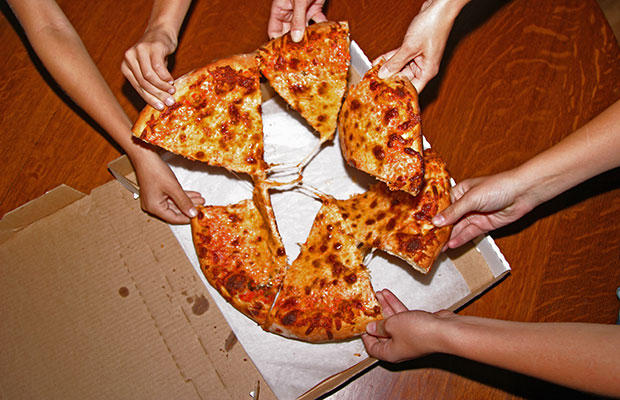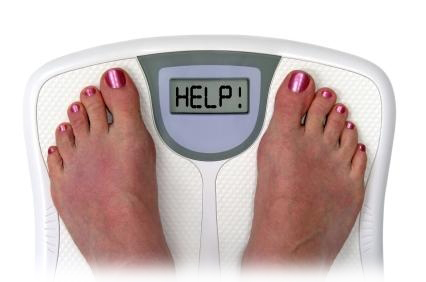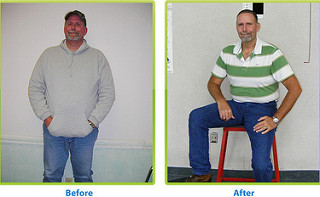How to Lose Weight Gardening
According to the American Council on Exercise, gardening burns approximately 300 calories an hour. It is an effective way to achieve cardiovascular fitness, build muscles, strengthen joints and increase flexibility. Gardening utilizes all of the major muscle groups in the body, including the back, neck, arms, stomach, shoulders, buttocks and legs. Gardening also has been proven to lower the risk for cancer, heart disease, high blood pressure and diabetes. Additionally, gardeners who grow their own fruits and vegetables can reap the benefits of healthy eating as they strive to lose weight. Use these tips to lose weight gardening.
Steps
Method 1 Establish a Gardening Routine
-
1
Start slowly. If you are not currently physically active, begin a gardening routine slowly. Most gardening tasks require the use of several muscle groups. If you start off slowly, you may avoid muscle strain and soreness.
- Begin by planting and watering plants. Add some light weeding. As you become stronger, add more strenuous tasks like digging, mowing the lawn or pushing a wheelbarrow.
-
2
Garden at least 3 to 5 times a week for 30 minutes to an hour. To lose weight and maximize health benefits, a regular gardening routine is important. If you do not have 30 minutes to 1 hour available at one time, break up the gardening tasks into smaller periods of time. For example, weed for 20 minutes in the morning and mow the lawn for 20 minutes in the afternoon.
- Plan a gardening activity each day. To lose weight gardening, you must work in the garden at least 3 to 5 times each week. Plan activities for each gardening session to make the best use of that time. For example, weed a garden bed for 30 minutes one day and turn compost for 30 minutes the next.
- Continue the gardening activities in the winter. If you live in an area with a cold winter climate, the garden may not need daily tending. However, continue the exercise routine. Shovel snow, split wood or rake leaves to continue the gardening weight loss.
-
3
Vary gardening activities. Rather than working on a strenuous gardening activity for 1 hour, break up garden tasks into more moderate activities. For example, break up a session of strenuous digging with flower deadheading. Rotate through a variety of gardening exercises each week. Consider a few of the following activities to vary your gardening routine.
- Mow the lawn with a push mower. A push mower, rather than a riding mower, provides great cardiovascular exercise. During the summer months, mow the lawn once or twice a week. If your yard is too large to use a push mower in a single session, divide the lawn into small areas and mow each area over the course of a week.
- Dig holes. Digging holes for fence posts, flower transplants or new trees builds muscles in the stomach, legs, shoulders, arms, neck and back. Instead of using gas- or electric-powered post hole diggers, get out a shovel and dig a hole yourself.
- Start a compost pile. Compost is a valuable fertilizer for the garden, but also presents an opportunity for gardening exercise. Turning or rotating compost with a pitchfork burns about 250 to 300 calories every 30 minutes.
- Weed to lose weight. Weeding helps tone your legs, arms, shoulders and back. The more resistant your weeds, the better workout you will be. When weeding, switch arm and leg positions to ensure even muscle use throughout your body. Instead of spraying weeds with chemicals, pull them out yourself to expend extra calories and tone your muscles.
Method 2 Burn Calories, Build Muscles and Increase Flexibility While Gardening
-
1
Keep track of the calories you burn. In order to lose weight gardening, you must burn more calories than you consume. The following list is what an average male weighing 180 pounds (81.6 kg) will burn in 30 minutes of constant gardening activity.
- Water the lawn or garden with a hose to burn 61 calories.
- Rake leaves to burn 162 calories.
- Bag leaves to burn 162 calories.
- Plant seeds or seedlings to burn 162 calories.
- Weed a garden to burn 182 calories.
- Plant trees to burn 182 calories.
- Clear land to burn 202 calories.
- Dig, till or spade a garden to burn 202 calories.
- Lay sod to burn 202 calories.
- Chop wood to burn 243 calories.
- Mow the lawn with a push mower to burn 243 calories.
- Shovel snow to burn 243 to 364 calories, depending on how heavy the snow is.
-
2
Build muscles while gardening. Most gardening tasks provide resistance training, which is comparable to weightlifting at a gym. Consider the following muscle-building activities.
- Mulch gardening beds. Lifting bags of mulch, shoveling mulch and pushing a wheelbarrow are strenuous gardening activities that build muscles in your arms, legs, back and shoulders.
- Turn a compost pile. Using a pitchfork or hoe to turn a compost pile builds your shoulders, chest, back, upper arms, thighs and legs.
- Transport garden supplies. Moving heavy supplies, such as bags of soil or fertilizer and garden pots, can build muscles in your arms, legs, shoulders and back. Moving garden supplies from the garden center to your car, into your yard and around your garden also provides a cardiovascular workout that increases your heart rate, which is an effective way to lose weight.
-
3
Use proper form to build muscles and avoid pain. Pay attention to proper posture and body positioning in order to build muscle tone safely.
- Avoid jerking motions. Keep all body motions steady and smooth.
- Keep abdominals firm. This will help you maintain proper back alignment, and will also build strong abdominal muscles.
- Use your legs, not your back, when lifting heavy objects. Bend your knees and put weight on your legs, rather than your back.
- Utilize proper form when diggings. Do not twist your back when digging with a shovel. Rather, point your front foot in the direction you are digging and turn your body toward the foot. Bend your knees while shoveling. Alternate the leading foot while digging for extended periods of time. Avoid holding your breath. Exhale as you lift a heavy load with the shovel and inhale as you lower it. By concentrating on your breathing, you will maximize your efficiency.
- Use a cushion when weeding on your knees. This will protect your knees. Keep your back straight and avoid sitting on your heels while kneeling. Stand up and stretch your arms, legs and back every 10 minutes.
- 4 Maximize results. Gardening is a good workout, but to maximize results, exaggerate movements. Exaggerated movements increase the body's range of motion. For example, rather than simply raking, bend your knees to increase muscle use in your legs. As you continue raking, challenge yourself by bending your legs lower and lower until your muscles begin to tire.
- 5 Increase flexibility. Gardening requires a lot of stretching, such as bending to plant flowers, extending a rake to gather leaves or reaching to trim tall branches. When stretching, focus on increased flexibility. If you can't bend from the waist and touch the ground when you begin gardening, keep working at it. Over time, you will increase your range of motion.
- 6 Increase your metabolism. Gardening activities like planting, digging and weeding incorporate movements that benefit your muscle strength, flexibility and cardiovascular system. Not only do you burn calories while accomplishing garden tasks, but you also build muscle. The muscle development helps increase your metabolic rate, even when your body is at rest.
-
How To Get In Shape With Weight Loss Exercise
It has long been established that in order to lose weight, diet and e
-
Learn How Fast Weight Loss Really Works
Our way of life has given rise to many problems that need to be addre
-
Having Issues With Your Weight? Try This Plan!
TIP! Slowly reducing the number of calories you consume each
-
How to Lose Weight as a Kid
If you want to lose weight as a kid, its all a matter of focusing on
-
Home, Slim, Home: 10 Ways to Make Weight Loss Easier at Home
Cut the Lights Installing a dimmer switch in your kitchen and turning
-
11 Lazy Ways To Burn More Calories
You might think losing weight is all about hard work at the gym and ha
- DON'T MISS
- Winning The Ultimage Weight Loss Battle
- Here Is The Best Way To Loose Weight Fast And Live A Healthy Life
- Is Dieting the Right Choice?
- Heres Your Guide To Obtaining A Quicker Weight Loss
- Why Youre Not Losing Weightvar zeus = zeus
- Eating Out Weight Loss Tips
- Keeping A Safe Weight Loss Regimen
- 5 Weird Things That Can Increase Your Appetite
- Weight Loss Tip #62- Mix strength training with cardio to lose weight
- 6 Steps To Best Weight Loss




